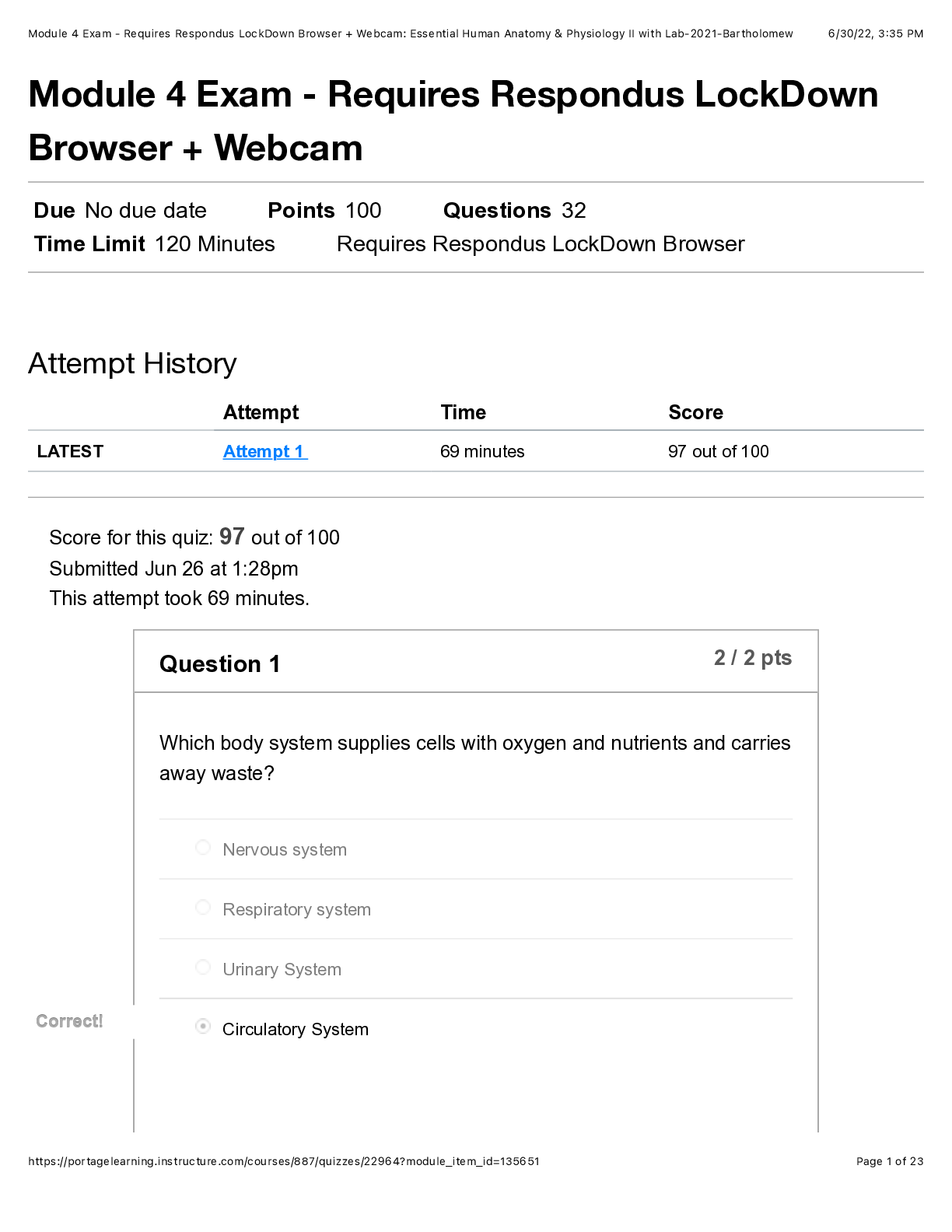*NURSING > QUESTIONS & ANSWERS > Complications Associated with Gestational Age and Development (All)
Complications Associated with Gestational Age and Development
Document Content and Description Below
1. Which is the most useful factor in preventing premature birth? a. High socioeconomic status b. Adequate prenatal care c. Aid to Families with Dependent Children d. Women, Infants, and Children ... (WIC) nutritional program ANS: B Prenatal care is vital for identifying possible problems. People with higher socioeconomic status are more likely to seek adequate prenatal care, which is the most helpful for prevention of premature births. Lower socioeconomic groups do not seek out health care, which puts them at risk for preterm labor. Aid to Families with Dependent Children and WIC assist in the nutritional status of the pregnant woman; however, the most helpful intervention for the prevention of premature births is adequate prenatal care. DIF: Cognitive Level: Understanding OBJ: Nursing Process Step: Assessment MSC: Patient Needs: Health Promotion and Maintenance 2. In comparison with the term infant, the preterm infant has a. more subcutaneous fat. b. well-developed flexor muscles. c. few blood vessels visible through the skin. d. greater surface area in proportion to weight. ANS: D Preterm infants have greater surface area in proportion to their weight. More subcutaneous fat, well-developed flexor muscles, and few blood vessels visible through the skin are features that are more characteristic of a term infant. DIF: Cognitive Level: Analysis OBJ: Nursing Process Step: Assessment MSC: Patient Needs: Physiologic Integrity 3. Decreased surfactant production in the preterm lung is a problem because a. surfactant keeps the alveoli open during expiration. b. surfactant causes increased permeability of the alveoli. c. surfactant dilates the bronchioles, decreasing airway resistance. d. surfactant provides transportation for oxygen to enter the blood supply. ANS: A Surfactant prevents the alveoli from collapsing each time the infant exhales, thus reducing the work of breathing. It does not affect the bronchioles. By keeping the alveoli open, surfactant permits enhanced oxygen exchange. Infants treated with surfactant have higher survival rates. DIF: Cognitive Level: Understanding OBJ: Nursing Process Step: Assessment MSC: Patient Needs: Physiologic Integrity NURSINGTB.COM Foundations of Maternal-Newborn and Women's Health Nursing 7th Edition Murray Test Bank This study source was downloaded by 100000773243632 from CourseHero.com on 06-11-2021 14:05:03 GMT -05:00 https://www.coursehero.com/file/78246291/23pdf/ This study [Show More]
Last updated: 2 years ago
Preview 1 out of 8 pages

Buy this document to get the full access instantly
Instant Download Access after purchase
Buy NowInstant download
We Accept:

Reviews( 0 )
$8.00
Can't find what you want? Try our AI powered Search
Document information
Connected school, study & course
About the document
Uploaded On
Jun 11, 2021
Number of pages
8
Written in
Additional information
This document has been written for:
Uploaded
Jun 11, 2021
Downloads
0
Views
59



 (1).png)
.png)








